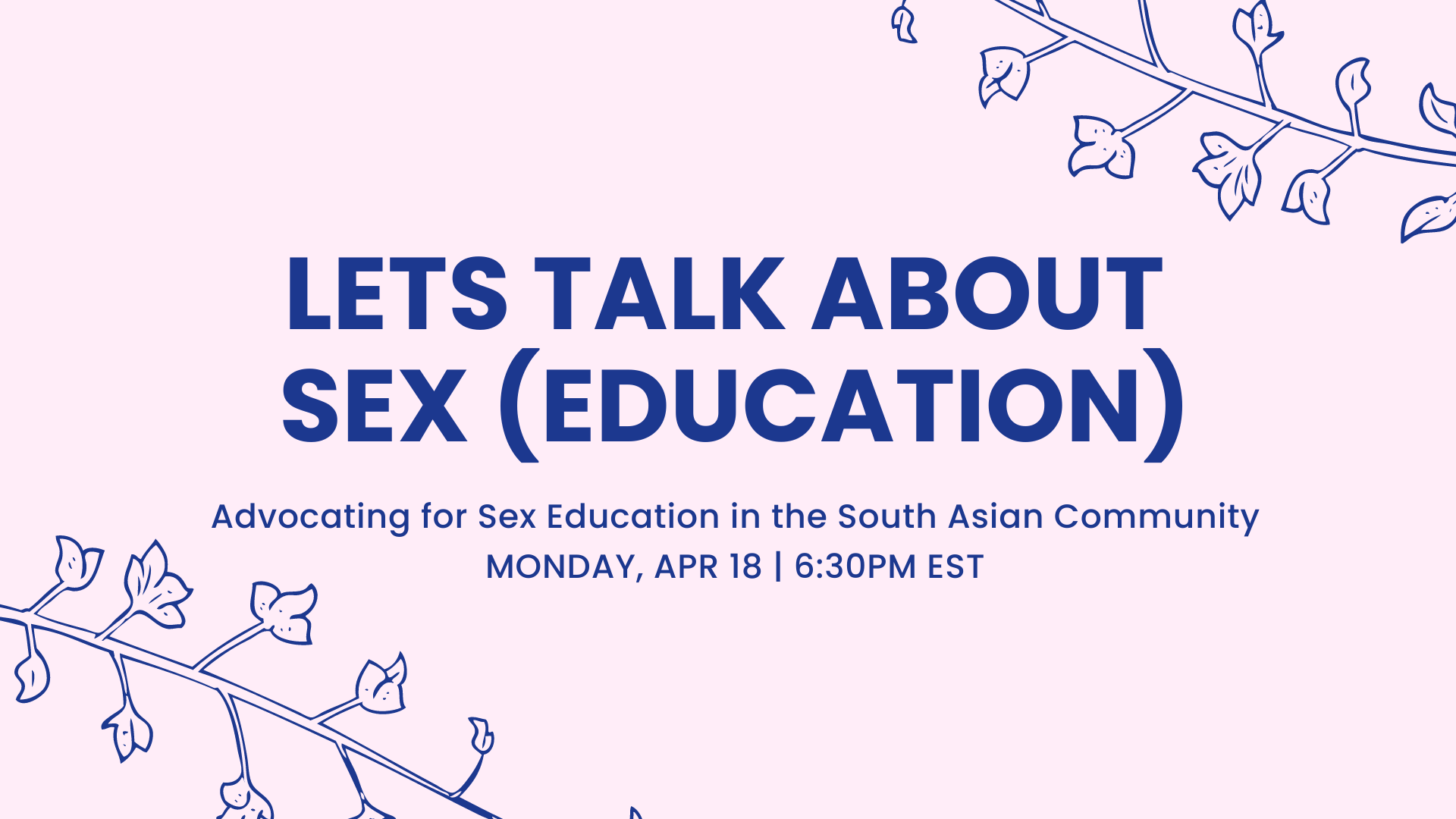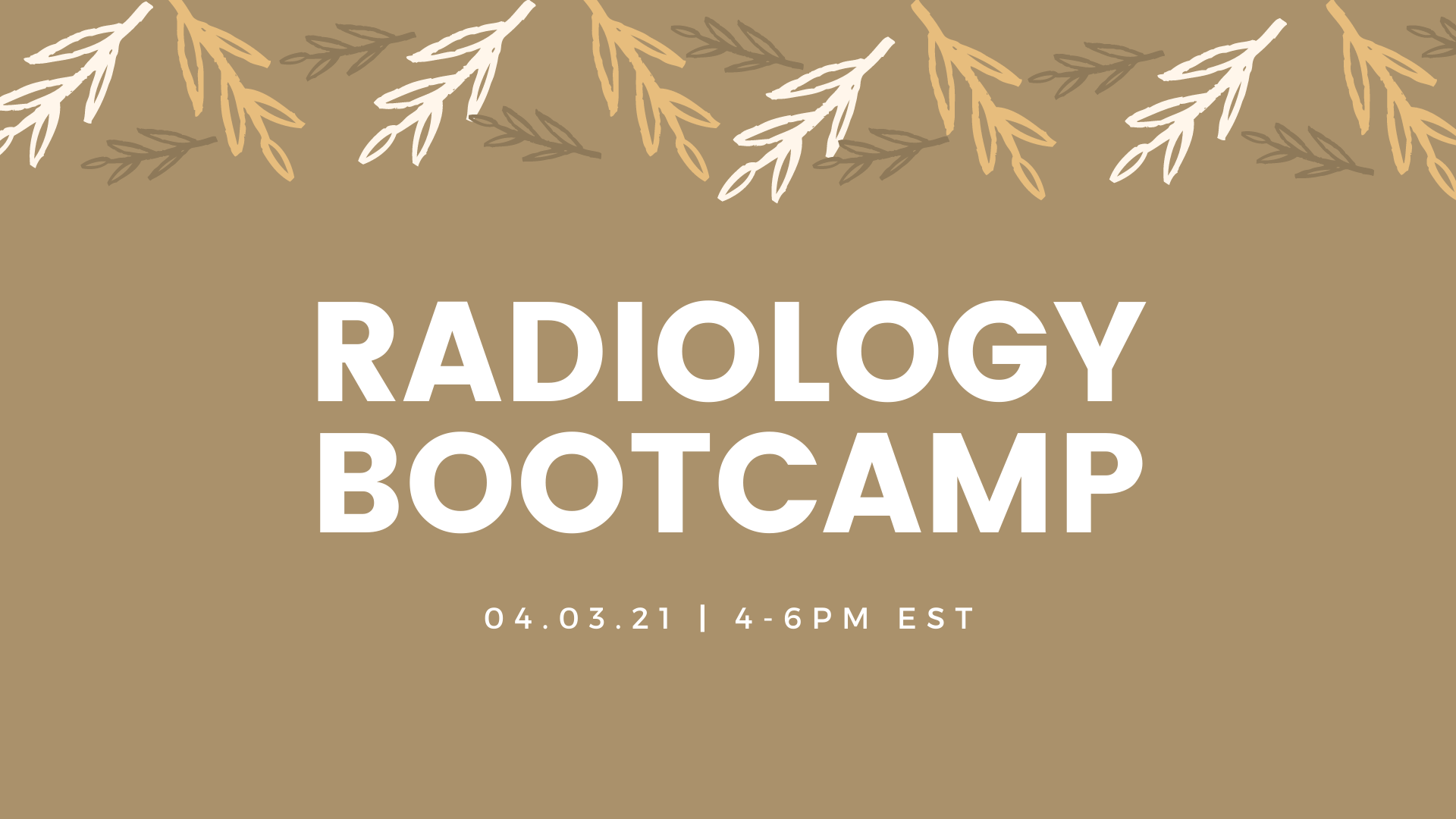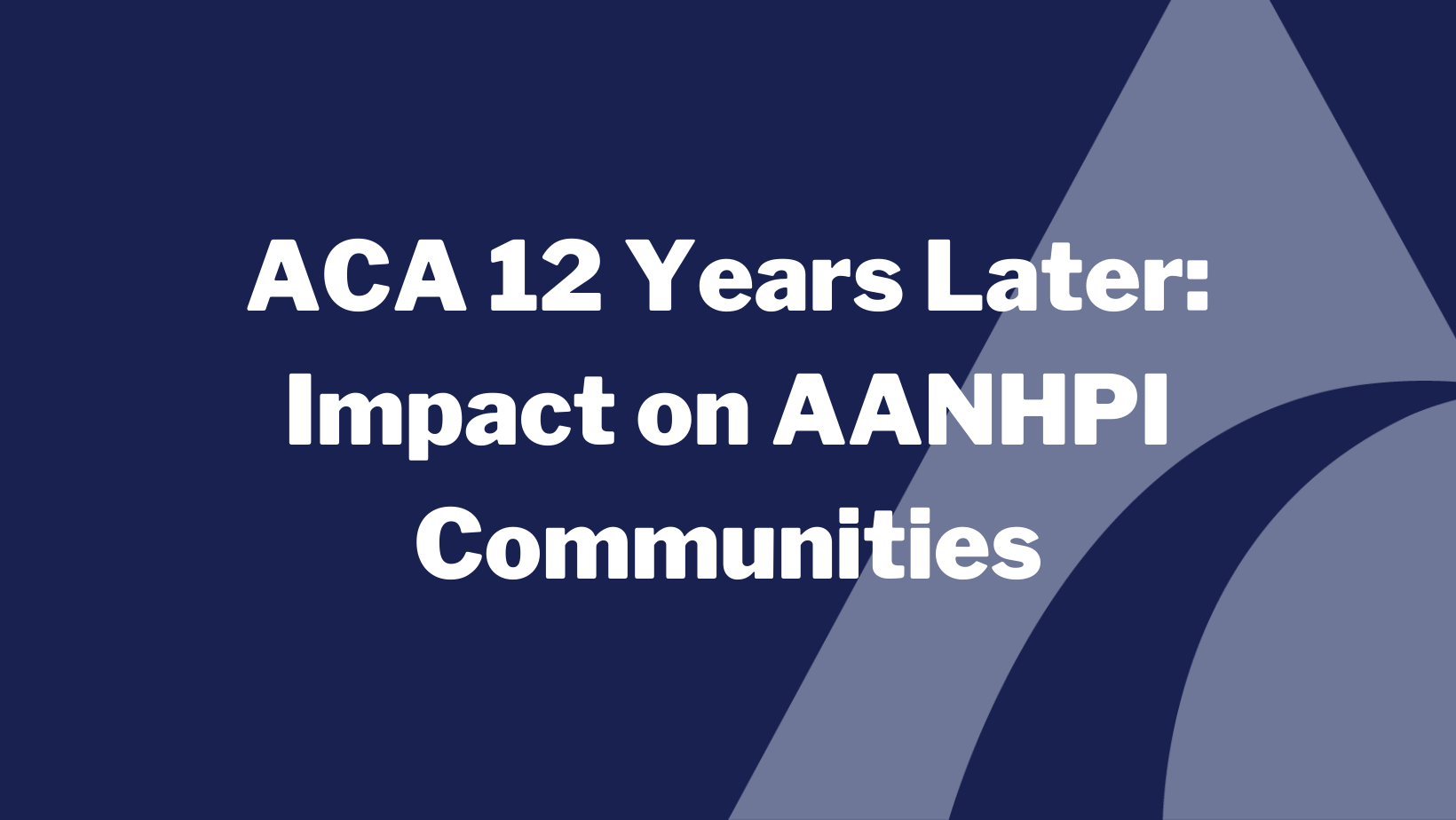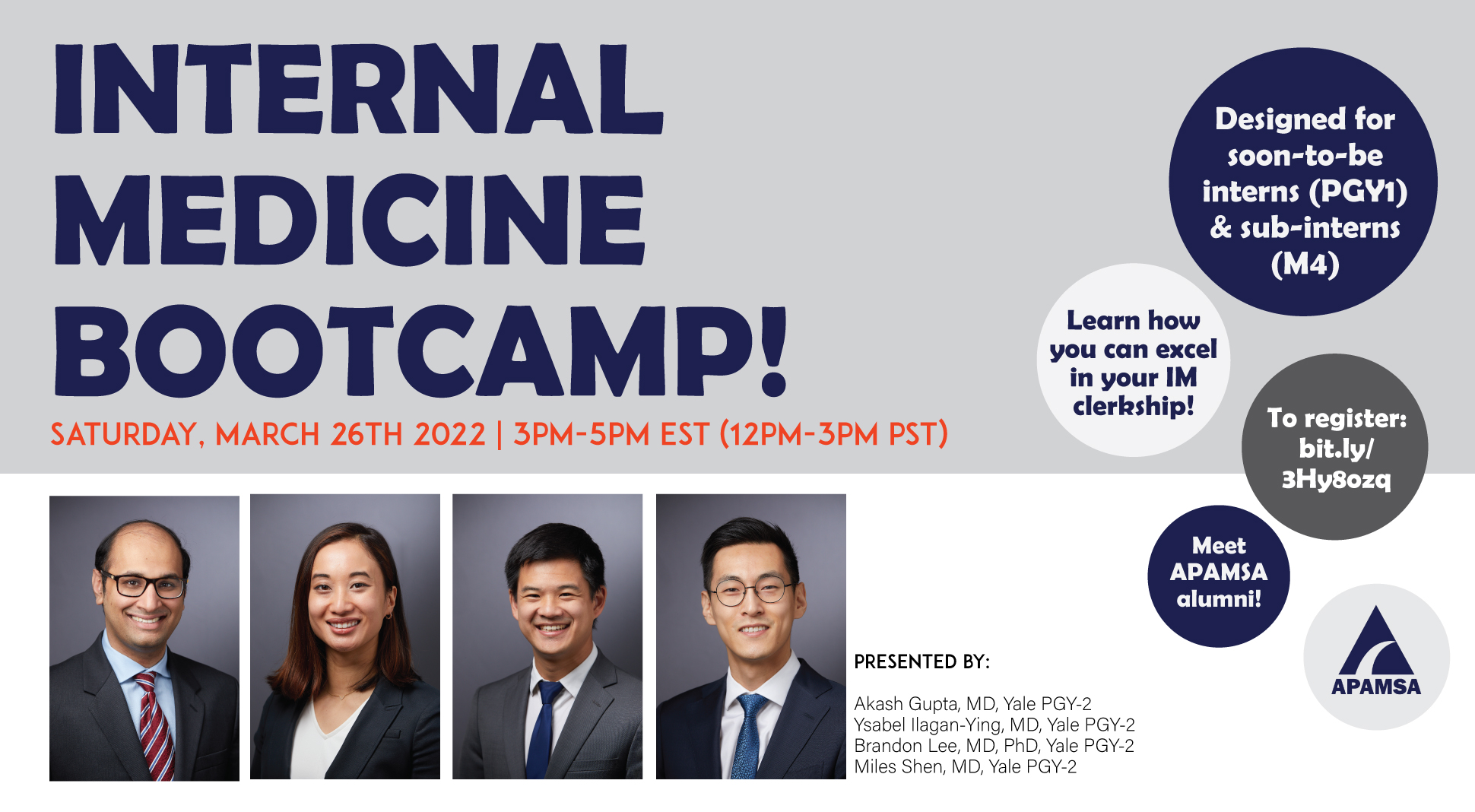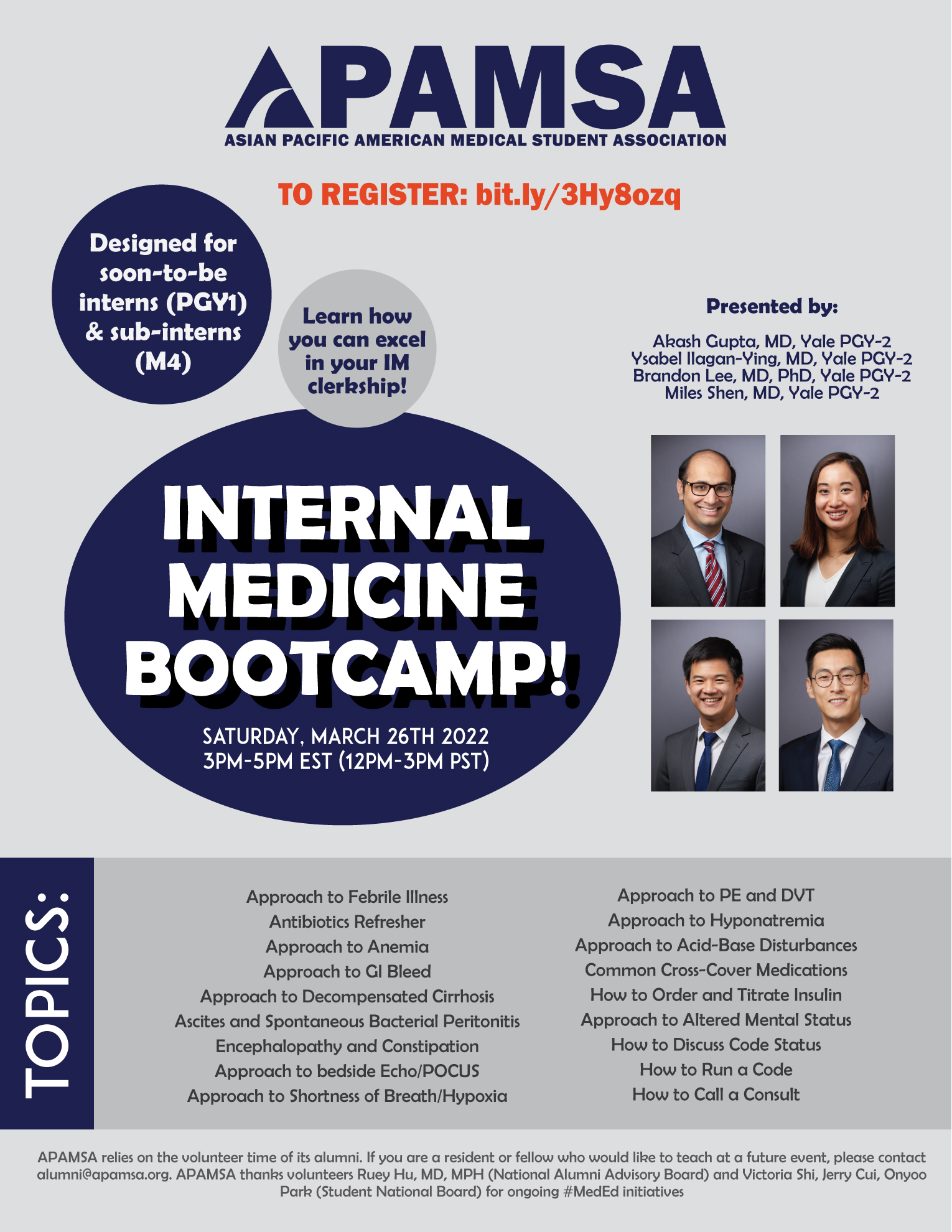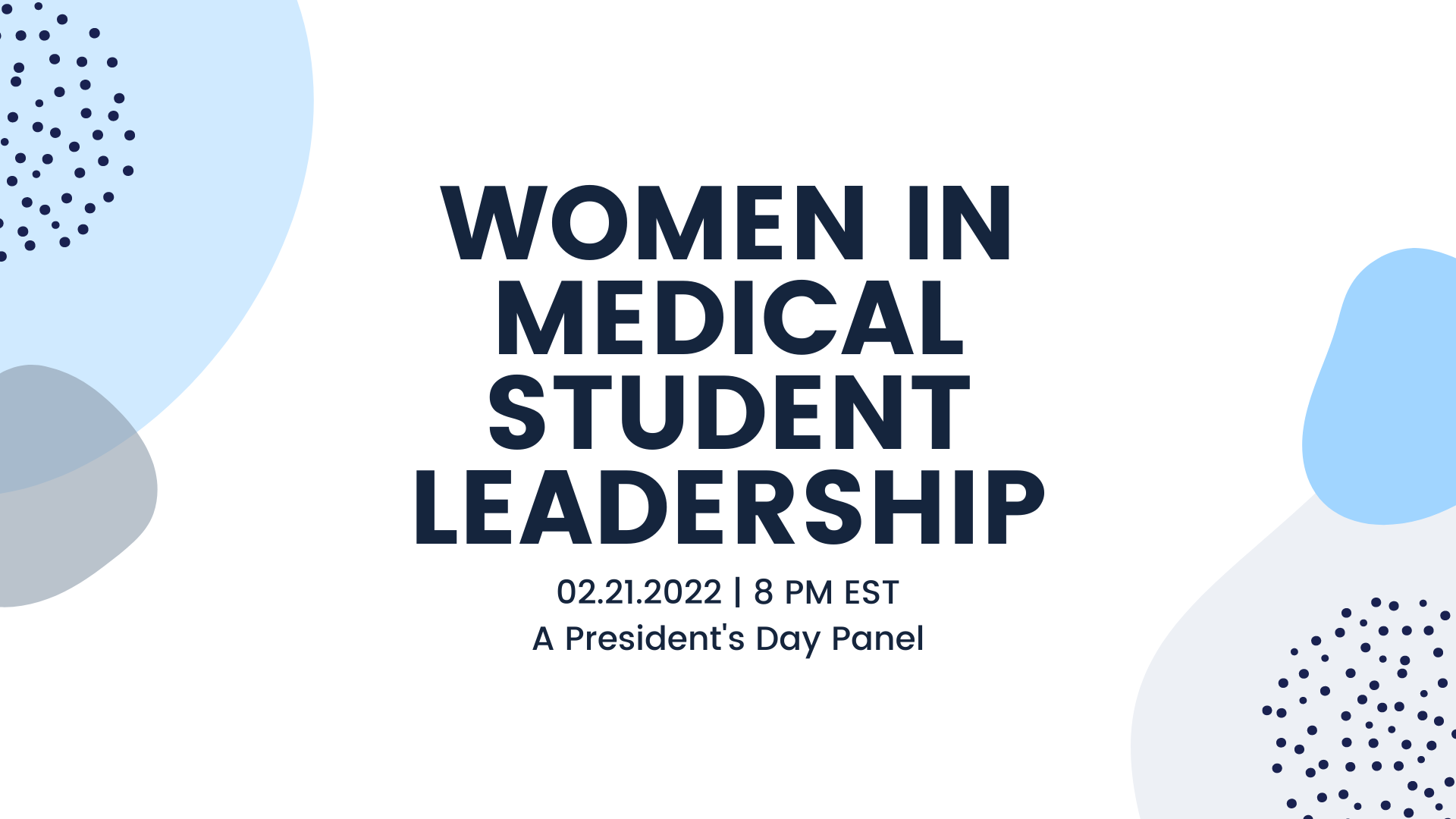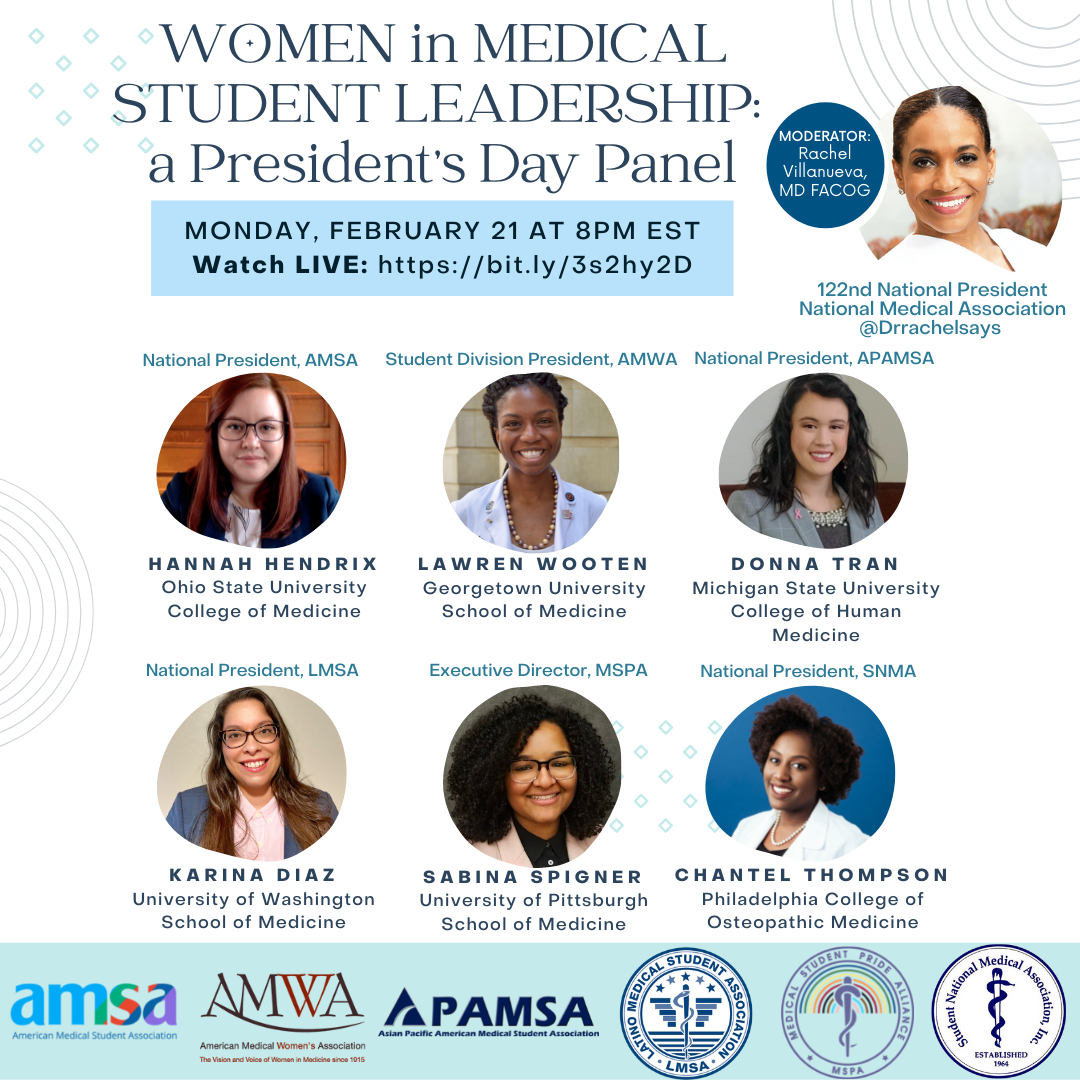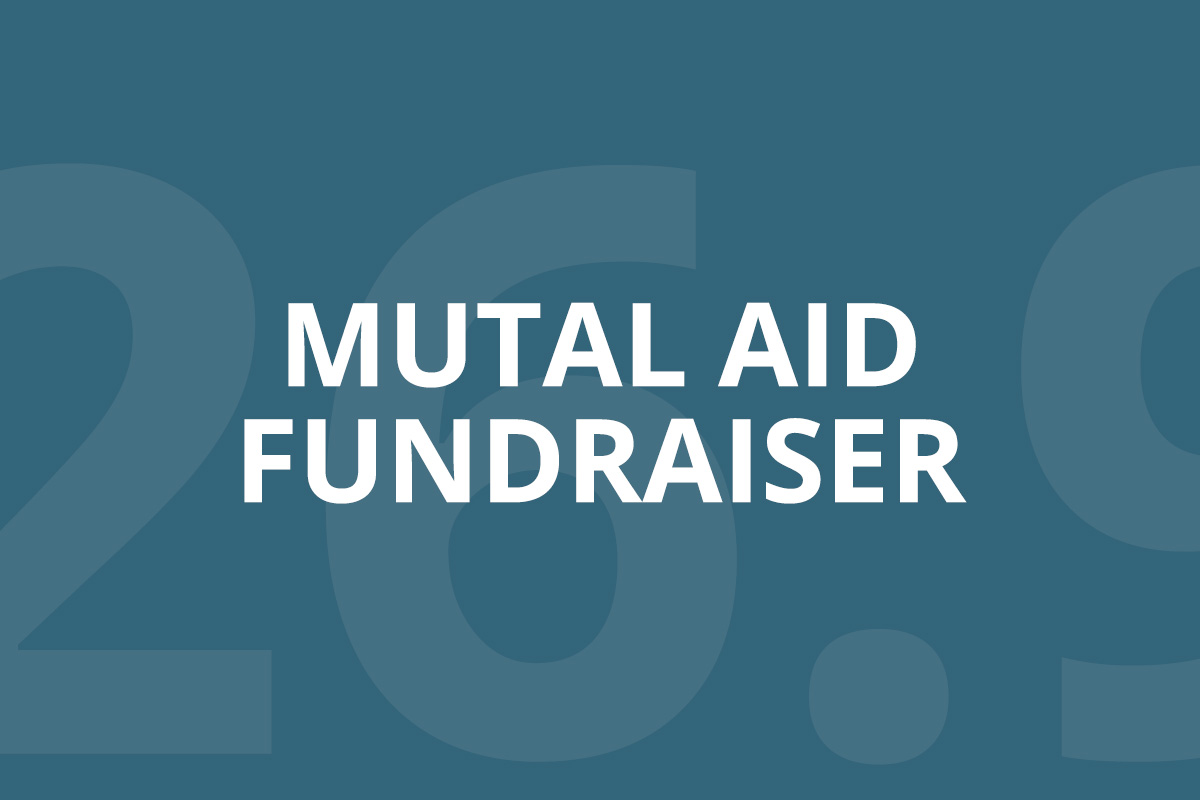Let's Talk About Sex (Education)

Let’s talk about sex (education)! Join us as we hear about advocating for sex education in the South Asian community from Nawal Umar. They are a policy analyst at SIECUS: Sex Ed for Social Change.
Zoom meeting Meeting ID: 912 5703 5311. Passcode: Health1.
Please submit any topics or questions you would like our speaker to discuss by April 14th https://forms.gle/s88AfTdoeJq9utjx8. Email any questions to email Aliasger Ezzi at sadirector@apamsa.org.
Radiology Bootcamp
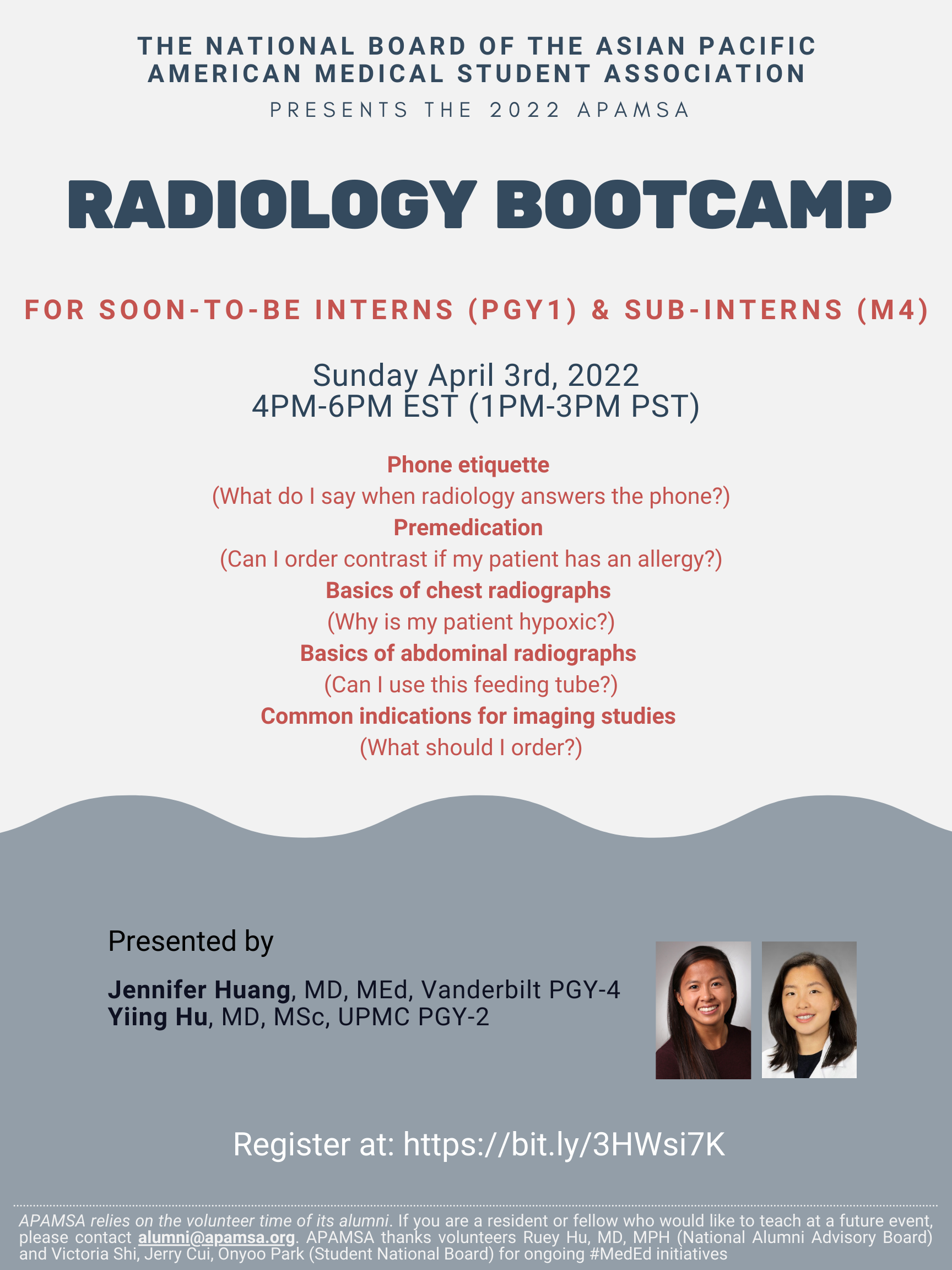
Come join APAMSA on Sunday April 3rd from 4PM-6PM EST (1PM-3PM PST) for our Radiology Bootcamp! Perfect preparation for a sub-I or intern year. Our residents will be covering all the high yield topics you will need to be successful, including premedication, basics of chest and abdominal radiographs, and common indications for imaging studies. Register at: https://bit.ly/3HWsi7K
Psychiatry Bootcamp
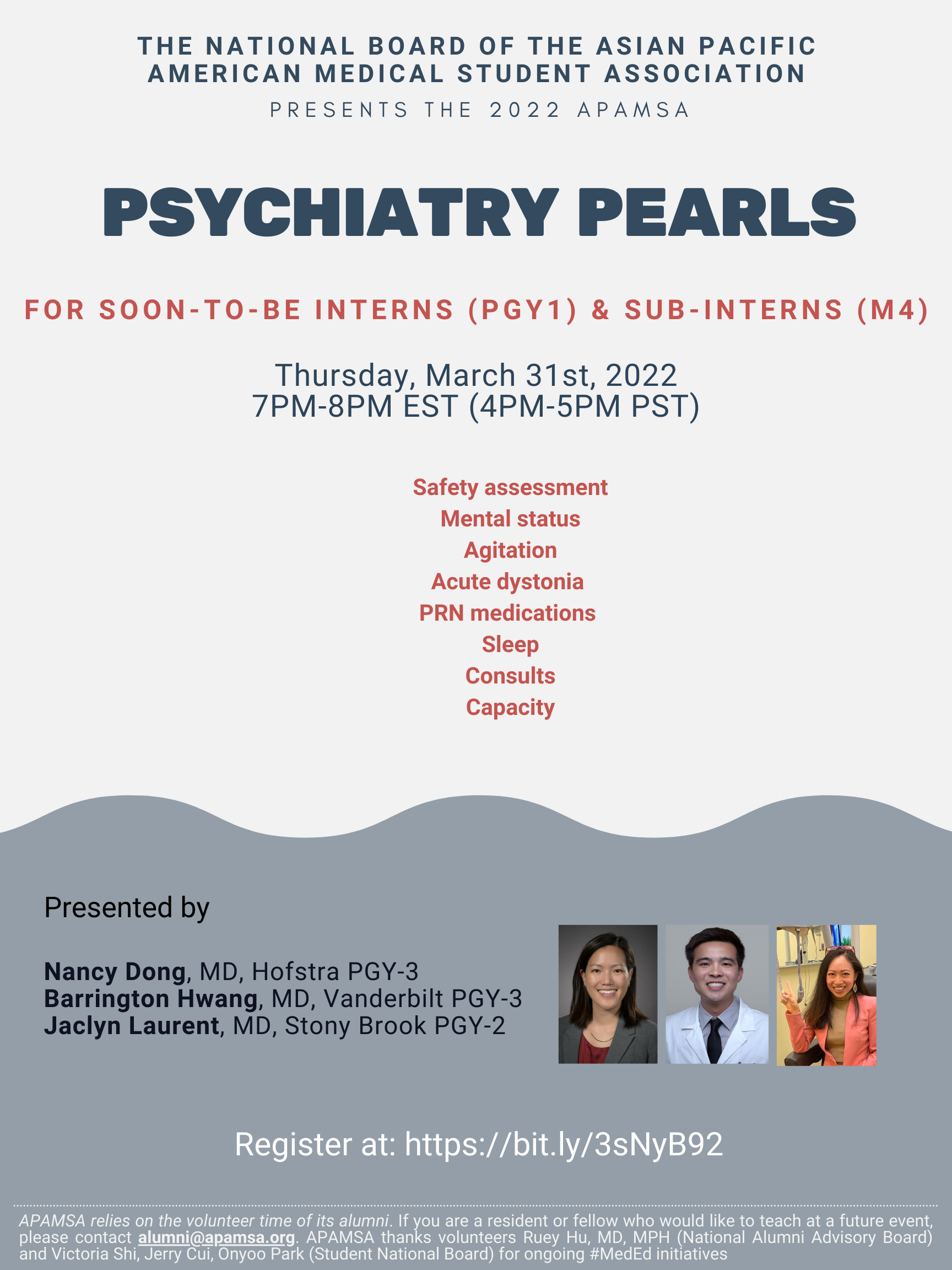
Come join APAMSA on Thursday March 31st from 7PM-8PM EST (4PM-5PM PST) for our Psychiatry Bootcamp! Perfect preparation for a sub-I or intern year. Our residents will be covering all the high yield topics you will need to be successful, including safety and mental status assessment, agitation, acute dystonia, PRN medications, and capacity. Register at: https://bit.ly/3sNyB92
ACA 12 Years Later: Impact on AANHPI Communities
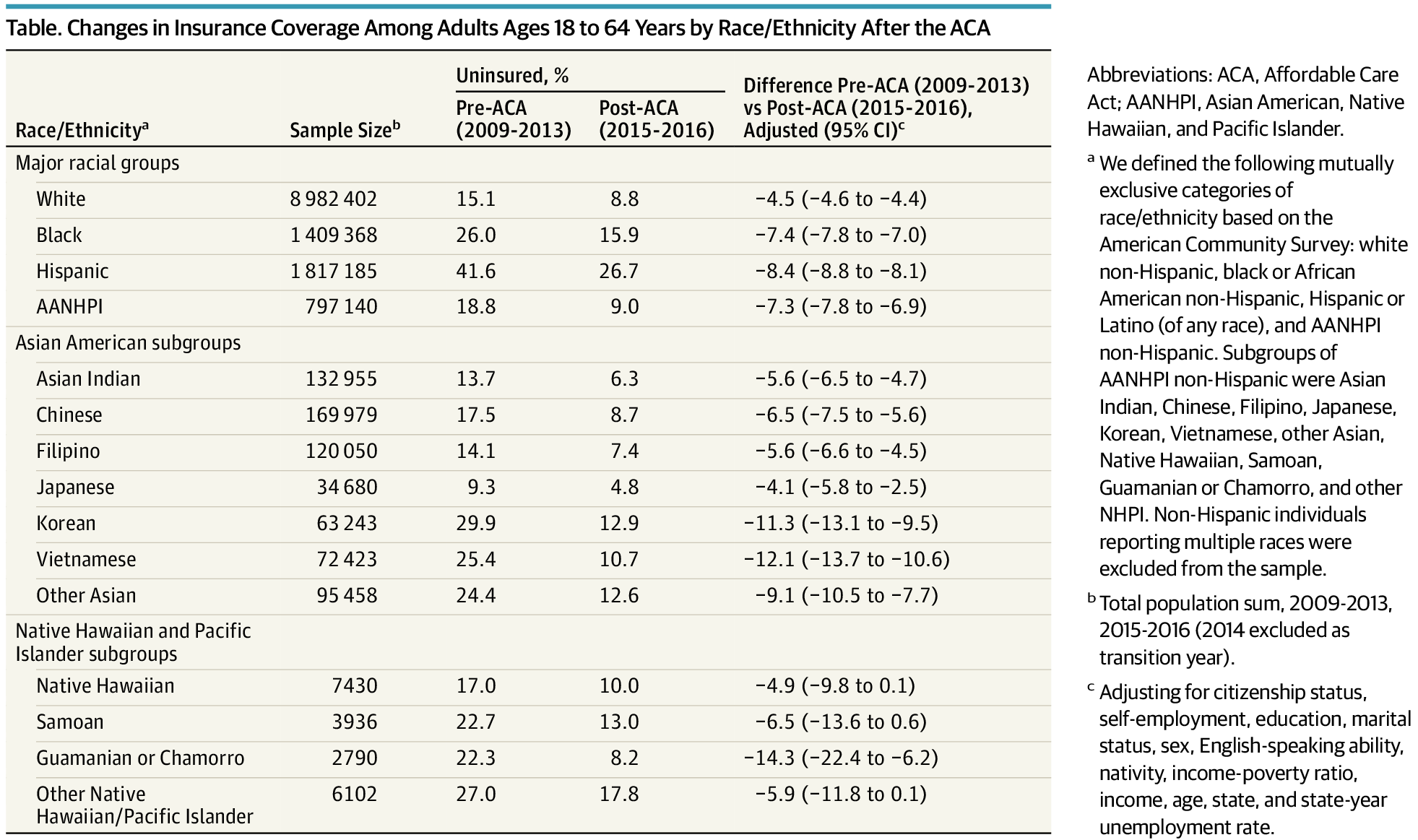
Twelve years ago on March 23, 2010, the Patient Protection and Affordable Care Act (ACA) was signed into law by President Barack Obama. The expansive law included provisions such as an expansion of Medicaid eligibility and the introduction of a health insurance marketplace with federal subsidies to help low-income Americans afford health insurance. Since then, the uninsured rate among non-elderly adults has fallen nearly 40% from 17.8% in 2010 to 10.9% in 2019 according to analyses by the Kaiser Family Foundation.
During this weeklong celebration of the ACA hosted by The White House and the Department of Health and Human Services, APAMSA highlights the impact of the ACA on the AANHPI communities. In a 2018 publication by John J. Park et al. in JAMA Internal Medicine, the authors found that the AANHPI uninsured rate fell by more than one half from 18.8% before the ACA to 9.0% by 2015-2016. In particular, the study examined differences by AANHPI subgroup. Korean Americans, who had the highest pre-ACA uninsured rate at 29.9%, saw their uninsured rate fall an adjusted 11.3 percentage points. Guamanian or Chamorro Americans saw a 14.3 percentage point adjusted reduction in their uninsured rate. In context, the ACA nearly eliminated the coverage gap between white and ANHPI Americans. Still, 7.4% of AANHPIs remained uninsured as of 2019 with uninsured rates for other race and ethnic groups as high as 20% for Hispanic Americans. Thus, the ACA may have significantly reduced the coverage gap, but it is clear that substantial work remains to achieve universal equitable health coverage for AANHPI communities and all Americans — a goal APAMSA remains steadfastly committed to realizing in our advocacy.
Internal Medicine Bootcamp
Date: March 26, 2022 3:00 PM Eastern Time (US and Canada)
REGISTER HERE: https://bit.ly/3Hy8ozq
Hoping for an IM refresher before sub-I or intern year? Join us for an Internal Medicine Bootcamp hosted by residents from Yale on March 26th from 3-5pm EST (12-2PM PST)! They will be covering all the high yield topics you will need to be successful in your intern year, including approach to DVT, decompensated cirrhosis, GI bleed, acid base disturbances, calling consults, running a code, and more.
Anti-Asian Racism Toolkit
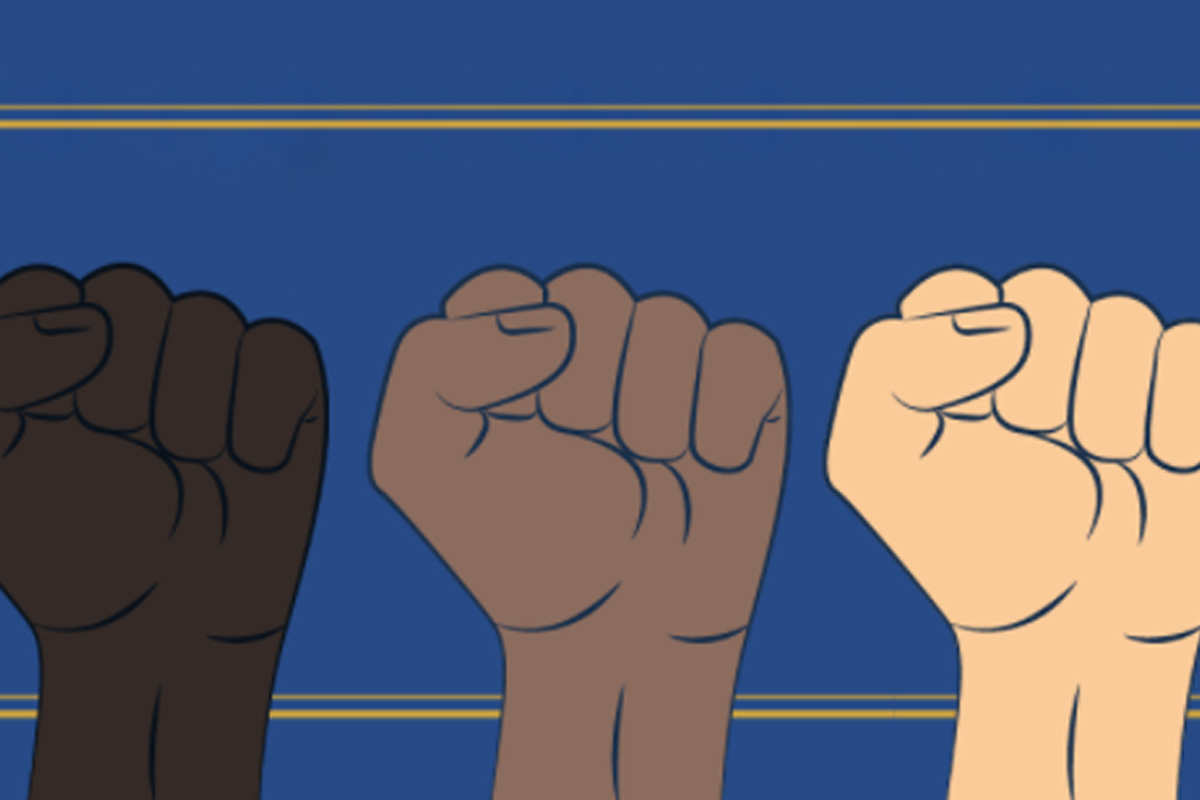
Dear APAMSA family:
In honor of the one year anniversary of the tragedy in Atlanta, GA on March 16, 2021 – we remember the lives of those lost. We also recognize that more action is needed, and APAMSA is committed to advocating for our members and our communities in years to come.
Inspired by your advocacy, we released our National APAMSA Anti-Asian Racism Toolkit one year ago today.
This toolkit, intended to guide individuals and chapters to advocate within their institutions and to collaborate for large-scale change, includes:
-
Chapter resources
-
Social media infographics
-
Partner organizations and contacts
-
Template letter for requesting institutional support, including National APAMSA-endorsed demands
…and will be continually updated in response to your needs and national events.
Follow this link to request access to the Toolkit.
Not sure how to get started? We’ll be holding a workshop on how to apply these tools at your institution – date/time to be announced soon!
In solidarity,
Your National APAMSA Board
Women in Medical Student Leadership Panel
Date: Feb 21, 2022 8:00 PM Eastern Time (US and Canada)
STREAM HERE: https://bit.ly/3HrMxK
Spend an evening with the student leaders from the American Medical Student Association (AMSA), American Medical Women’s Association (AMWA), Asian Pacific American Medical Student Association (APAMSA), Latino Medical Student Association (LMSA), Medical Student Pride Alliance (MSPA) and the Student National Medical Association (SNMA) as they discuss the road to national leadership, their roles and how they push their organizations forward while balancing the demands of medical school.
COVID-19 Vaccination Toolkit
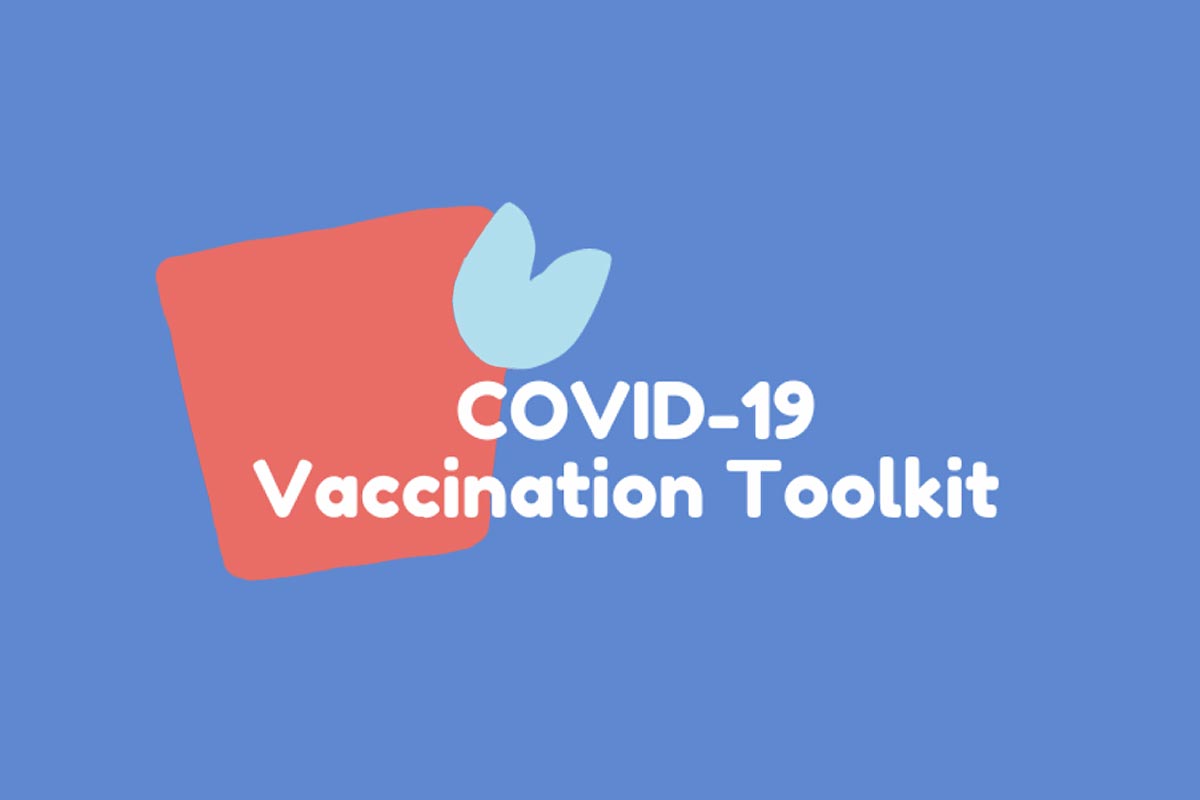
This document is a compilation of resources that address vaccine hesitancy and access for AANHPI communities, particularly focused on providing linguistically and culturally appropriate information. A study conducted by UCSF this year found that 34% of AAPI respondents were concerned about the vaccine’s side effects, 6% were worried about vaccine safety, and 36% had multiple concerns regarding the vaccine.
Moreover, the barriers faced by AANHPI individuals during COVID is telling of other long-standing challenges the community has faced historically. One such problem is with data disaggregation. Many locales do not even include Asian American as an option for ethnicity in surveys, let alone subdivisions of the vast diversity within the AANHPI community. COVID-19 morbidity and mortality are also not well studied for AANHPI populations. From the sparse data that we do have, we know that many of the disparities in care are masked. For instance, in NYC’s public hospital system, South Asians had the second highest rate of positivity (after Hispanics) and second highest rate of hospitalization (after Blacks), and Chinese patients had the highest mortality of all groups. Despite this, Asian Americans are not listed as a vulnerable population by the National Academy of Sciences Engineering Medicine*. In the absence of disaggregated data, it is difficult to allocate appropriate resources to address problems like vaccine hesitancy and access barriers for the diverse AANHPI groups in the country.
Thus, we hope that this document is able to provide the language and resources for AANHPI medical students to speak to their family, friends, and others in the community to better address the concerns and questions about COVID-19 and the vaccine.
APAMSA offers Community Outreach Grants to chapters that may want to reach out to their local communities. For more information contact the outreach@apamsa.org.
*For more information on how COVID-19 has impacted AANHPI subgroups, please refer here.
Table of Contents
How to Address Vaccine Hesitancy:
Chinese (Simplified/Traditional):
How to Address Vaccine Hesitancy:
Guide to COVID-19 Vaccine Communication
Chinese (Simplified/Traditional):
CDC Viral Vector Vaccines Infosheet / CDC Viral Vector Vaccines Infosheet
CDC mRNA Vaccines Infosheet / CDC mRNA Vaccines Infosheet
LA County Vaccine FAQ / LA County Vaccine FAQ
CT Official Website COVID-19 Facts / CT Official Website COVID-19 Facts
How did the vaccine get developed so quickly? / How did the vaccine get developed so quickly?
Is the vaccine safe? / Is the vaccine safe?
Pfizer and Moderna Ingredients / Pfizer and Moderna Ingredients
Avoiding Vaccine Scams / Avoiding Vaccine Scams
Vaccine Safety Video / Vaccine Safety Video
Geographic Specific Information:
Hindi:
CT Official Website COVID-19 Facts
How did the vaccine get developed so quickly?
Pfizer and Moderna Ingredients
Hmong:
Japanese:
Karen:
Khmer:
CT Official Website COVID-19 Facts
How did the vaccine get developed so quickly?
Pfizer and Moderna Ingredients
Korean:
CDC Viral Vector Vaccines Infosheet
CT Official Website COVID-19 Facts
How did the vaccine get developed so quickly?
Pfizer and Moderna Ingredients
Geographic Specific Information:
-
CA:
-
NYC:
Lao:
CT Official Website COVID-19 Facts
Pfizer and Moderna Ingredients
How did the vaccine get developed so quickly?
Nepali:
Tagalog:
CDC Viral Vector Vaccines Infosheet
Geographic Specific Information:
Tamil:
Telugu:
Thai:
Vietnamese:
CDC Viral Vector Vaccines Infosheet
CT Official Website COVID-19 Facts
How did the vaccine get developed so quickly?
Pfizer and Moderna Ingredients
Geographic Specific Information:
APAMSA Mutual Aid Fundraiser: Thank You for Your Support!
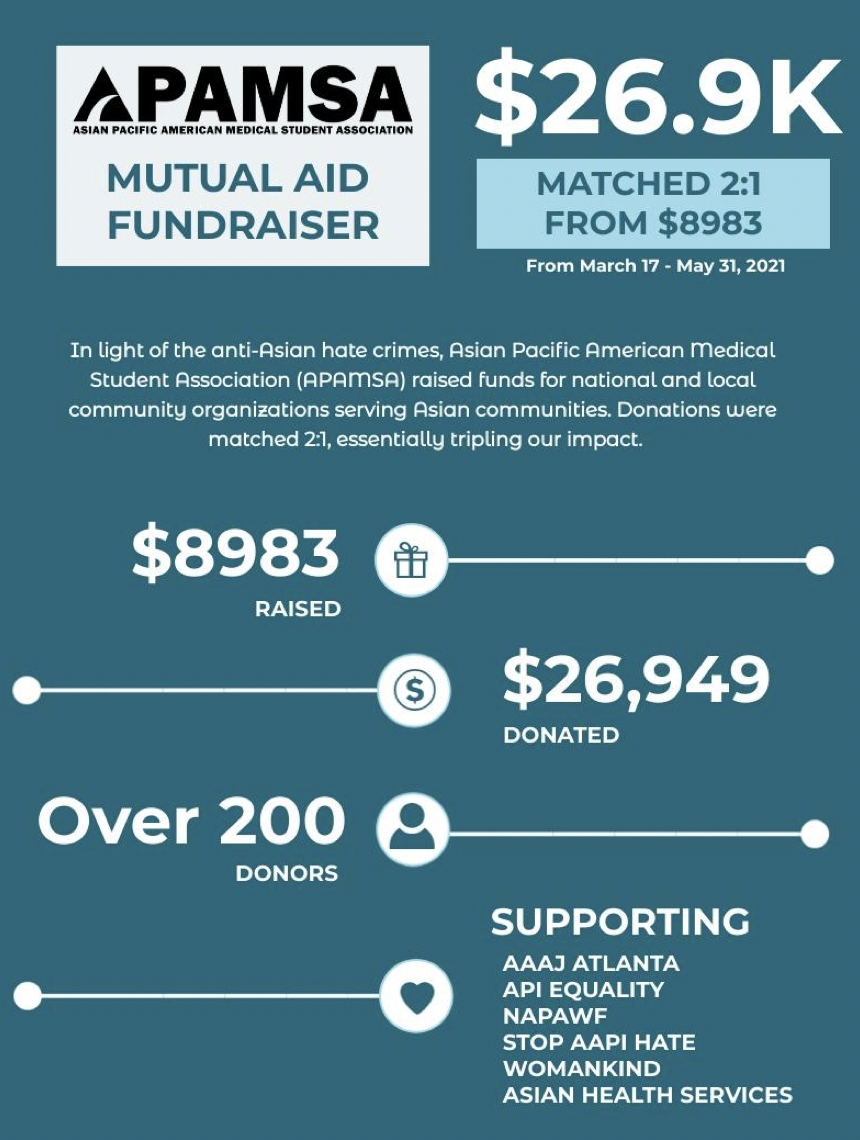
The APAMSA Mutual Aid Fundraiser, in response to anti-Asian hate, ended on May 31, 2021. With your help, we exceeded our goal of $8888, raising over $8900 matched to a total of over $26.9K! The final amount was distributed to AAAJ Atlanta, API Equality, Asian Health Services, NAPAWF, Stop AAPI Hate, and Womankind. Thank you all for your commitment in supporting these wonderful organizations!
#APAMSAVotes2020
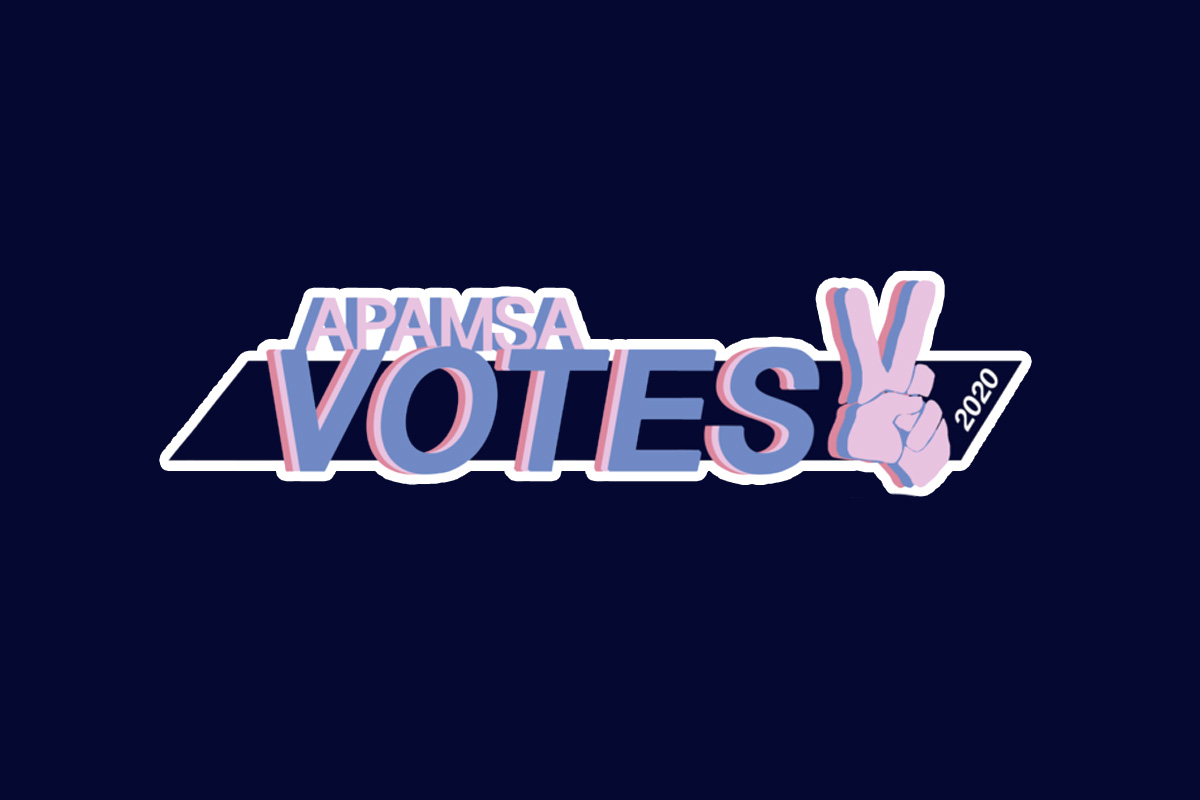
This is completely nonpartisan. It’s not about party – it’s about maintaining our democracy.
Thank you to all of you that have voted early thus far! APAMSA has partnered with Vote Early Day, a collective multi-disciplinary movement working to ensure all Americans know their options to vote early. Most people can still vote early, from now until Election day. Find out your specific early voting options here: https://www.voteearlyday.org/vote-early/
Why vote?
-
Both medical students and AAPI voters have traditionally low turnout rate
-
Issues critical to our communities are at stake, including the COVID-19 response, healthcare, and immigration policy
-
Free swag!!
How do I register?
Click here for state-specific instructions. No online voter registration in your state? NVRD will mail you a pre-filled registration form – click here!
*Some states have deadlines as early as 10/3, so check now!*
How do I vote?
-
Early Voting
In some states, there is an in-person early voting option prior to Election Day, where registered voters may cast a ballot in a designated period prior to Election Day. Each state or jurisdiction have varying rules and times, please check the details in your state.
-
Absentee Voting (By Mail)
-
Absentee ballots are available to voters in all states, with different restrictions depending on the state. The form that absentee voting takes varies—generally, absentee voting consists of a ballot mailed to your residence, allowing you to cast a vote prior to—or by—Election Day by mail.
-
Many states allow you to vote absentee without an excuse or specific reason, while other states will require an excuse for you to vote absentee.
-
Most states require you to request an absentee ballot by a predetermined deadline before each election.
-
Election Day Voting (voting in-person)
-
The general election in 2020 is on November 3, 2020.
-
You may vote in person on Election Day, but you may be required to vote in designated locations and within the hours the polling places are open.
-
Some states require a valid photo ID before you cast your ballot, or else you will cast a provisional ballot. Check your state’s voter ID requirements here. As Election Day draws closer, you may find your polling location here.
Have questions or need help voting? Call 1-888-API-VOTE (1-888-274-8683).
Bilingual assistance is available in English, Mandarin, Cantonese, Korean, Vietnamese, Tagalog, Urdu, Hindi, and Bengali.
For more voter information in other languages, click here!
(Some information on this page courtesy of APIA Votes.)
Other ways to contribute to the democratic voting process:
(more details in the upcoming days–visit this page for up to date instructions/additional resources added)
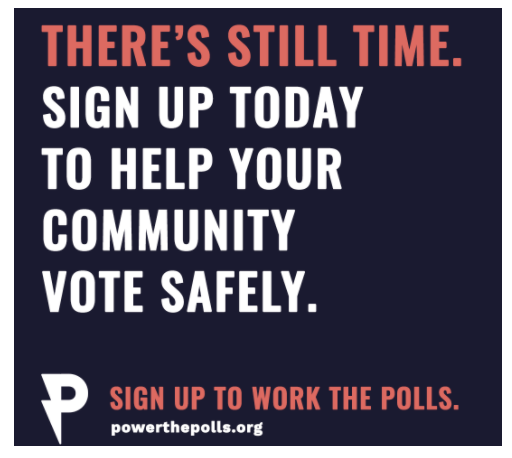
Phone banking with APAMSA (coming soon!)
APAMSA has partnered with Power the Polls to help engage people to sign up to be poll workers–young people are particularly important as they are not only the future of our democracy, but also because of the current pandemic!
Sign up to become a paid poll worker here!
